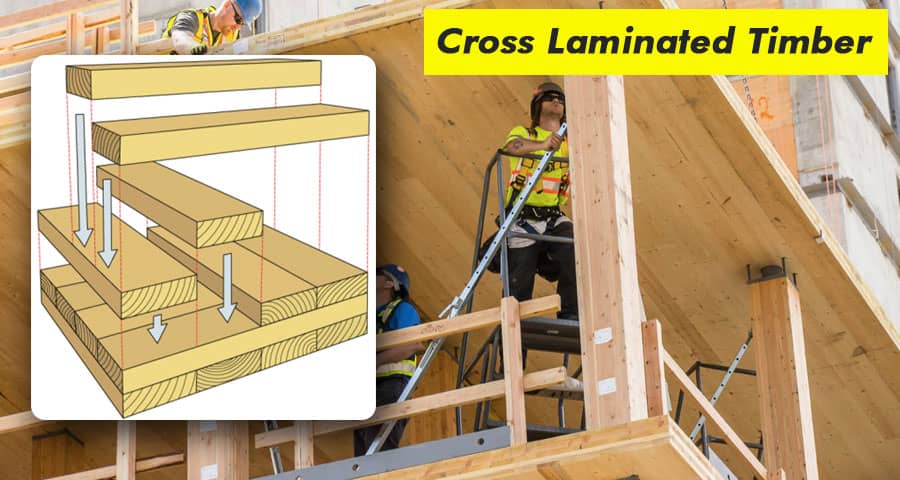Unveiling the Marvels of Cross Laminated Timber

Introduction to Cross Laminated Timber (CLT)
In the realm of modern architecture and sustainable construction practices, Cross Laminated Timber (CLT) stands out as a revolutionary building material. This engineered wood product is crafted by gluing together layers of lumber in alternating directions, creating a robust and versatile panel.
Features of Cross Laminated Timber
- Strength and Durability: One of the most remarkable features of CLT is its exceptional strength-to-weight ratio. Despite being lightweight, CLT panels exhibit remarkable structural integrity, making them suitable for a wide array of applications ranging from residential to commercial construction. Additionally, CLT boasts impressive durability, ensuring longevity and resilience against various environmental factors.
- Sustainability: In an era marked by growing environmental concerns, CLT emerges as a beacon of sustainability in the construction industry. Manufactured from renewable wood resources, CLT helps reduce carbon emissions by sequestering carbon dioxide within its structure. Furthermore, the production process of CLT consumes less energy compared to traditional building materials, making it an eco-friendly choice for conscientious builders and architects.
- Design Flexibility: Architects and designers are drawn to CLT for its unparalleled design flexibility. Unlike conventional construction materials, CLT panels can be customized to meet diverse architectural specifications, enabling the creation of innovative and visually stunning structures. From soaring skyscrapers to cozy residential homes, CLT offers boundless possibilities for creative expression and architectural ingenuity.
- Fire Resistance: Contrary to common misconceptions, CLT exhibits remarkable fire resistance properties. Thanks to its dense composition and charring effect, CLT panels have demonstrated superior performance in fire tests, outperforming traditional building materials such as steel and concrete. This inherent fire resistance enhances the safety and resilience of structures constructed with CLT, providing occupants with added peace of mind.
- Thermal Insulation: In addition to its structural prowess, CLT also excels in thermal insulation. The natural insulating properties of wood, coupled with the multi-layered construction of CLT panels, contribute to superior energy efficiency and indoor comfort. By minimizing heat transfer and reducing thermal bridging, CLT helps maintain optimal temperatures within buildings, resulting in reduced energy consumption and lower utility costs.
Benefits of Cross Laminated Timber
- Speed of Construction: One of the most significant advantages of CLT is its rapid construction process. Prefabricated CLT panels can be manufactured off-site and assembled on-site with remarkable efficiency, significantly reducing construction timelines. This accelerated construction pace not only saves time but also minimizes disruptions to surrounding communities, making CLT an ideal choice for projects with tight deadlines or logistical constraints.
- Cost-Effectiveness: While the initial cost of CLT may seem higher than traditional building materials, its long-term benefits far outweigh the upfront investment. From reduced construction time and labor costs to enhanced energy efficiency and durability, CLT offers a compelling return on investment over the lifespan of a building. Moreover, the lightweight nature of CLT simplifies transportation and installation, further lowering overall project costs.
- Environmental Sustainability: As the global demand for sustainable building solutions continues to escalate, CLT emerges as a frontrunner in the quest for greener construction practices. By harnessing the power of renewable wood resources and minimizing carbon emissions, CLT helps mitigate the environmental impact of construction activities. Furthermore, CLT buildings can be disassembled and recycled at the end of their lifecycle, contributing to a circular economy and minimizing waste.
- Aesthetic Appeal: Beyond its practical benefits, CLT also offers unparalleled aesthetic appeal. The natural warmth and beauty of wood lend a timeless elegance to CLT structures, creating inviting and harmonious living spaces. Whether used as exposed beams or integrated into modern facades, CLT adds a touch of authenticity and sophistication to architectural designs, captivating the hearts and minds of occupants and observers alike.
Conclusion
In conclusion, Cross Laminated Timber (CLT) represents a paradigm shift in the field of construction, offering a harmonious blend of strength, sustainability, and design versatility. From towering skyscrapers to cozy cabins in the woods, CLT has the potential to reshape the built environment and pave the way for a more sustainable future. By embracing CLT as a cornerstone of modern construction practices, we can build not only structures but also communities that thrive in harmony with nature.
